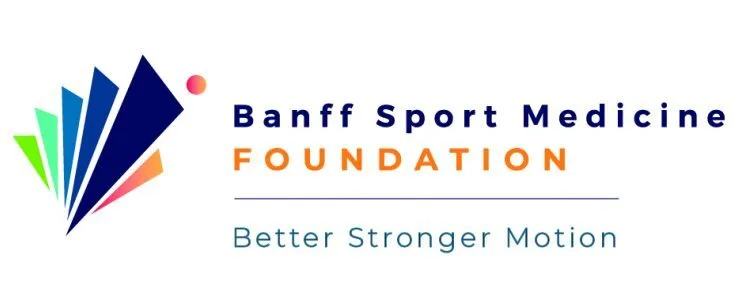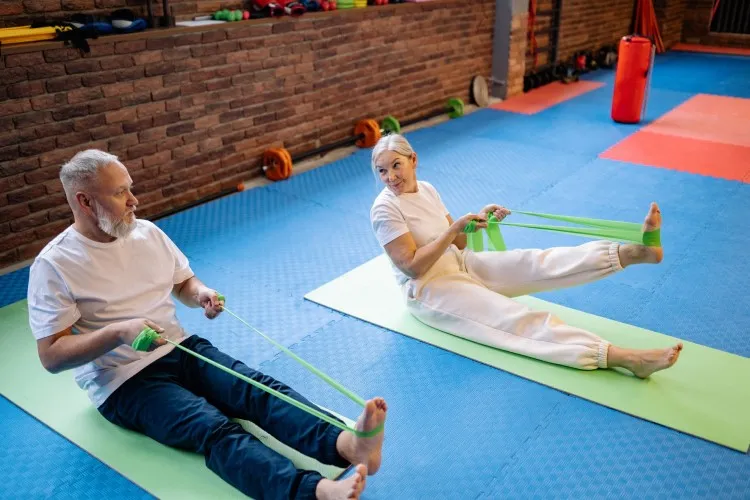Menopause and exercise: A potential tool for managing hot flashes
Menopause occurs when a woman’s menstrual period permanently stops. It marks the end of reproductive capacity. This is a normal part of aging and typically begins between the ages of 45 to 55. The duration of menopause ranges from 7 to 14 years depending on various individual factors including ethnicity, smoking status, and age.
There are 3 phases of menopause:
- Perimenopause (also known as the menopause transition) starts when the ovaries gradually decrease estrogen production. This usually occurs 8-10 years before menopause. During this phase, you may begin to experience symptoms.
- Menopause occurs when you do not have a period or spotting for 12 consecutive months. This means there are no eggs being released by the ovaries and estrogen production levels are low.
- Postmenopause begins as soon as menopause is reached. Menopausal symptoms normally become milder at this stage.
There are many symptoms that can fall under the umbrella of each of these menopausal phases. Some examples include hot flashes, changes in emotion and mood, difficulty sleeping, vaginal dryness, weight gain, and hair thinning/loss. These symptoms occur mostly due to the changes in hormonal levels, primarily the drop in estrogen.
Hot flashes: the basics
Hot flashes are one of the most common symptoms of menopause and can happen at any stage, including before (perimenopause) and after (postmenopause).
A hot flash occurs when you experience a quick onset of warmth, typically without a specific reason or trigger. Often this feeling of warmth will be felt in the neck, chest and face areas. Other symptoms of hot flashes include a fast heartbeat, feeling flushed, and experiencing anxiety.
When hot flashes are experienced at night, they are called night sweats.
What causes a hot flash?
Hot flashes are caused by the drop in estrogen levels during menopausal phases.
Due to reduced estrogen, the hypothalamus (the brain’s temperature regulator) can overreact to slight increases in body temperature, initiating a chain of events to cool down the body. This includes dissipating body heat through greater blood flow to the skin surface via enlargement of the blood vessels as well as sweating.
Management of hot flashes
There are both pharmaceutical (like hormone therapy) and non-pharmaceutical approaches to managing hot flashes.
Non-pharmaceutical approaches include relaxation strategies, natural remedies and vitamin supplements. However, more research is needed to explore the effectiveness of these approaches.
Exercise and physical activity have also been suggested as a potential non-pharmaceutical approach to helping manage the severity and frequency of hot flashes.
Here’s how exercise is thought to work….
Exercise can positively alter the body’s thermoregulatory control system. This is done through modifying the threshold in which the “cool down” response (sweating and enlargement of vessels) is activated, and thus lowering core body temperature.
As an added benefit, exercise may also help with managing other menopausal symptoms such as weight gain, and can also improve bone health.
Moderate-intensity aerobic training has been shown to be effective in improving the severity and frequency of hot flashes in postmenopausal women.

In one research study, participants engaged in a 16-week progressive and individualized (based on fitness level) exercise program. This program included rowing, cross-training, treadmill walking, running, and cycling. Participants began with 30 minutes of moderate-intensity aerobic exercise three-times per week and progressed to exercising for 45 minutes for 4-5 times per week. Those who were in the exercise intervention group reported decreases in the frequency and severity of their hot flashes.
Resistance training has also been shown to decrease the frequency of moderate and severe hot flashes in postmenopausal women.
In this research study, participants completed a 15-week resistance training program which included a warmup, set exercises (body weight and seated resistance machines) and stretching, three-times per week. The exercises included: back raises, crunches, leg presses, leg curls, chest presses, latissimus dorsi (lat) pull-downs, seated rows, and leg extensions. Participants who completed the resistance training program reported a 44% decrease in their frequency of moderate and severe hot flashes compared to no changes in frequency reported by the control group (those not completing the training program).
Resistance training is especially important in postmenopausal women as the decrease in estrogen production results in changes in body composition, specifically related to bone mineral density, as well as fat and muscle mass. As a result, postmenopausal women are at an elevated risk for musculoskeletal (bone and joint) disorders such as osteoporosis. Resistance training has been shown to increase muscle strength and bone density which helps to counteract some of these changes in body composition. Further, these positive outcomes of resistance training can also lower the risk of fractures and falls. A win-win!!
A comment on perceived barriers to exercise by a Pelvic Health Physiotherapist…
For post-menopausal women, it is especially important to address perceived barriers to exercise including those related to pelvic health. Menopause can impact the pelvic floor due to the changes in hormone levels (mainly the drop in estrogen). The symptoms of these changes can fall under the umbrella of Genitourinary Syndrome of Menopause (GSM) and can act as barriers to exercise.
An example of a symptom that can be a perceived barrier is stress urinary incontinence. This might look like a woman experiencing urinary leakage when lifting weights, running, jumping, or hiking downhill. Pelvic floor therapy can help to assess whether you need to work on strengthening, relaxing, or better coordinating your muscles that help with bladder control.
— Learn more about pelvic health here —
Addressing these perceived barriers aids in women being able to engage in exercise free of stress and worry, leading to greater management of age-related changes and menopausal symptoms.
If you aren’t sure where to start, book in with a certified Pelvic Health Specialists, Physiotherapists, Strength and Conditioning Trainer, or consult with your doctor or healthcare provider.
Overall, exercise and being physically active may lead to an improvement in the severity and frequency of hot flashes, as well as helping with other symptoms of menopause.
Being physically active is only one of MANY strategies to managing menopausal symptoms, check out our article on nutritional approaches to symptom management here.
References
Bailey TG, Cable NT, Aziz N, Dobson R, Sprung VS, Low DA, Jones H. Exercise training reduces the frequency of menopausal hot flushes by improving thermoregulatory control. Menopause. 2016 Jul;23(7):708-18.
Berin E, Hammar M, Lindblom H, Lindh-Åstrand L, Rubér M, Spetz Holm AC. Resistance training for hot flushes in postmenopausal women: A randomised controlled trial. Maturitas. 2019 Aug;126:55-60.
Dąbrowska-Galas M, Dąbrowska J, Ptaszkowski K, Plinta R. High Physical Activity Level May Reduce Menopausal Symptoms. Medicina (Kaunas). 2019 Aug 11;55(8):466.
Isenmann E, Kaluza D, Havers T, Elbeshausen A, Geisler S, Hofmann K, Flenker U, Diel P, Gavanda S. Resistance training alters body composition in middle-aged women depending on menopause – A 20-week control trial. BMC Womens Health. 2023 Oct 6;23(1):526.






